This article was co-authored by David Nazarian, MD. Dr. David Nazarian is a board certified Internal Medicine Physician and the Owner of My Concierge MD, a medical practice in Beverly Hills California, specializing in concierge medicine, executive health and integrative medicine. Dr. Nazarian specializes in comprehensive physical examinations, IV Vitamin therapies, hormone replacement therapy, weight loss, platelet rich plasma therapies. He has over 16 years of medical training and facilitation and is a Diplomate of the American Board of Internal Medicine. He completed his B.S. in Psychology and Biology from the University of California, Los Angeles, his M.D. from the Sackler School of Medicine, and a residency at Huntington Memorial Hospital, an affiliate of the University of Southern California.
There are 7 references cited in this article, which can be found at the bottom of the page.
This article has been viewed 63,500 times.
Vitamin E is one of the fat-soluble vitamins, which also include Vitamins D, A, and K. Because it is fat-soluble, Vitamin E is efficiently absorbed into skin cells rather than staying on the surface of the skin.[1] There is a lot of scientific evidence that you can use topical Vitamin E for overall skin and hair health, as it makes a great moisturizer and a natural sunscreen. You can also use Vitamin E oil to reduce scarring after surgery or to reduce the size and look of older scars. There is less evidence for these uses, but many physicians and surgeons still recommend its use, having found that it has often helped their patients.[2] [3]
Steps
Getting the Benefits of Vitamin E Oil
-
1Use Vitamin E on your skin. It acts as an antioxidant, removing damaging substances from the skin. These substances, called free radicals, can arise from normal cellular metabolism. Vitamin E also performs a number of other functions on the skin:[4]
- Vitamin E also absorbs UV radiation from the sun and can help prevent sunburn, functioning as a natural sunscreen.
- Vitamin E may also act as an anti-inflammatory agent on the skin surface.
- Vitamin E has also been implicated in promoting skin wound healing and may be involved in reducing scar formation.[5]
-
2Apply Vitamin E to a scar. If you are trying to reduce the size or the look of a scar, use a Q-tip or a cotton ball to apply the oil directly onto the scar. Consult your physician or dermatologist to determine how often you should treat.
- If the area of scarring is relatively small, it may be simpler to snip the top off of one or two Vitamin E capsules. You can also puncture it and squeeze out the oil directly onto the scar.
- If you have any skin conditions, including eczema, psoriasis, or acne, consult with your physician or dermatologist before using Vitamin E.
Advertisement -
3Apply Vitamin E to your scalp and hair. Vitamin E can refresh dry, brittle hair. It is also great for dry scalps. Vitamin E promotes circulation, which is key to a healthy scalp. Pour out some of the oil and dip your fingers in it. Work it into your scalp. Focus on the roots of your hair, where the vitamin can soak into the hair and the scalp.[6]
- You can also apply it to the length of your hair to moisturize dry hair.
- Unless otherwise advised by a health professional, treatment once a week should be sufficient. Again, you don’t want to over do it.
- If you have any skin conditions, including eczema, psoriasis, or acne, consult with your physician or dermatologist before using Vitamin E.[7]
-
4Understand the antioxidant function of Vitamin E. Alpha-tocopherol functions as a potent antioxidant and protects cells from the damage that can be caused by high levels of free radicals (substances produced normally in all cells) and other oxidizing agents.
- Vitamin E also plays an important role in the immune system, cell-to-cell signaling, the regulation of the expression of a number of genes and a variety of biochemical (metabolic) reactions.
- Alpha-tocopherol also may play a role in stopping or slowing down the growth of certain types of tumors and decreasing the chances of heart disease by possibly slowing down the formation of plaques within the arteries and preventing the aggregation of platelets (slowing the formation of blood clots).[8]
Applying Vitamin E Oil Safely
-
1Be aware that you might be sensitive to vitamin E. Some people do develop sensitivities to oils that contain Vitamin E; however, it is not certain that the Vitamin E is responsible for the allergy. To lessen the change of a bad reaction, get natural, organic Vitamin E oil.
- The Vitamin E oil will be mixed with other oils, such as sesame oil, coconut oil or cocoa butter. Make certain that you don’t have any sensitivity to those by testing the oil on a small part of your skin. Put just a little bit on your wrists and wait for about 30 minutes to an hour. If you have no reaction, such as itching, blistering, redness, or any other problems, you should be able to use that oil.
- Some products may also contain vitamin C, in the form of lemon or another citrus oil. This is believed to increase the degree of skin protection.[9]
-
2Use the correct dosage. Consult with a dermatologist to figure out the best dosage for your particular needs. Many of the commercial products have over 5,000 IU (an international unit of pharmaceutical measurement) of Vitamin E listed. This is actually a really large dose. There have been few studies to determine what dose is the most useful for skin. In addition, many labels don’t give you a good idea of how much Vitamin E is in each dose. Thus, it can be difficult to determine exactly how much to use on your own.
- The temptation is always to use more but the fact is, we just don’t really know. It may be just fine to use as much as you want, but the research just has not been done.
-
3Use Vitamin E that is combined with another oil. Unless you are working with a dermatologist, the most prudent approach is to use Vitamin E oil on your skin in a mixture of other oils that can also moisturize and help nourish the skin. Many of the oils contain Vitamin E as well. Choose other oils in the mixture that won’t clog your pores, which are called non-comedogenic. The best non-comedogenic oils, according to the American Academy of Dermatology, include:
- Hemp seed oil is a relative of cannabis and contains sterols, antioxidants and essential fatty acids but very low levels of THC.[10]
- Shea butter is extracted from the shea nut. It is high in Vitamin E, which acts as an anti-oxidant.
- Sunflower oil is derived from sunflower seeds and contains polyunsaturated fatty acids and vitamin E.
- Castor oil is derived from the castor bean and is used to treat a number of inflammatory conditions. It contains essential fatty acids and undecylenic acid, which is germicidal for a number of microbes.
- Calendula oil is derived from the petals of the calendula flower and has been traditionally used for its healing properties. It is especially good at healing scars, including acne scars.
- Argan oil is rich in Vitamin E, carotenes (precursors of Vitamin A), and essential fatty acids. It is often used to treat skin infections and to moisturize the skin.
- Almond or Hazelnut oil both contain essential fatty acids, B vitamins, and are anti-inflammatory.
-
4Use very little of the oil in your daily skin regime. Rub a very light layer of the oil onto your skin. In fact, no matter what you are using the Vitamin E oil for always use a very small amount. These oils are very effective in moisturizing your skin and providing protection. In other words, a little bit goes a long way.
- Most of these oils can stain clothing and bedding. Be cautious when applying it and let it absorb thoroughly. If it can’t be absorbed into your skin because it has been absorbed by your clothing or bedding, then you aren’t getting the benefit.
- Even if you pick a non-comedogenic oil, it may clog your pores if you use too much. That could cause break-outs and acne.
-
5Finished.
Expert Q&A
-
QuestionHow does vitamin E oil help with acne scars?
 Patricia Somers, RD, PhDPatricia Somers is a Registered Dietitian and an Associate Professor of the Department of Educational Leadership and Policy at the University of Texas at Austin. She received her RD from the Academy of Nutrition and Dietetics in 1979 and her PhD in Educational Administration (Higher Education Specialization) from the University of New Orleans. She received an Emerging Scholar Award from the American Association of University Women and the Faculty Excellence Award in Research from the University of Arkansas, Little Rock.
Patricia Somers, RD, PhDPatricia Somers is a Registered Dietitian and an Associate Professor of the Department of Educational Leadership and Policy at the University of Texas at Austin. She received her RD from the Academy of Nutrition and Dietetics in 1979 and her PhD in Educational Administration (Higher Education Specialization) from the University of New Orleans. She received an Emerging Scholar Award from the American Association of University Women and the Faculty Excellence Award in Research from the University of Arkansas, Little Rock.
Registered Dietitian Topical vitamin E is an anti-inflammatory for the skin. Topical Vitamin E can reduce erythema (redding of the skin) and skin thickness.
Topical vitamin E is an anti-inflammatory for the skin. Topical Vitamin E can reduce erythema (redding of the skin) and skin thickness.
References
- ↑ http://lpi.oregonstate.edu/mic/micronutrients-health/skin-health/nutrient-index/vitamin-E
- ↑ http://www.ncbi.nlm.nih.gov/pubmed/10417589
- ↑ http://www.ncbi.nlm.nih.gov/pubmed/26044054
- ↑ http://lpi.oregonstate.edu/mic/micronutrients-health/skin-health/nutrient-index/vitamin-E
- ↑ http://lpi.oregonstate.edu/mic/micronutrients-health/skin-health/nutrient-index/vitamin-E
- ↑ https://link.springer.com/article/10.1007/s13659-020-00267-9
- ↑ http://www.huffingtonpost.com/2013/06/21/vitamin-e-oil-tips_n_3477654.html
- ↑ https://ods.od.nih.gov/factsheets/VitaminE-HealthProfessional/
- ↑ http://lpi.oregonstate.edu/mic/micronutrients-health/skin-health/nutrient-index/vitamin-E
About This Article
Vitamin E is great for your overall skin and hair health and can be used to reduce the size and look of scars. You can also use it as a natural moisturizer and sunscreen to keep your skin protected. To apply vitamin E oil, just dab a little bit onto your skin and rub it in with your fingers until it soaks in. Or, if you want to refresh dry, brittle hair, apply a little oil to your scalp. Use your fingers to work it into your skin and the roots of your hair. It can be difficult to determine exactly how much Vitamin E oil you should use, so consult with a dermatologist and follow the dosage they recommend. A little bit of Vitamin E oil goes a long way, so you can add a few drops of Vitamin E oil to a carrier oil such as sesame oil, coconut oil, or cocoa butter to add it to your skincare routine. To learn about the antioxidant function of Vitamin E, keep reading!
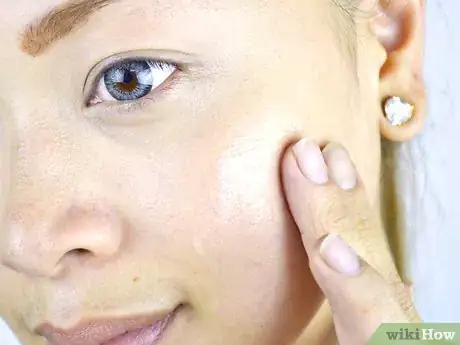
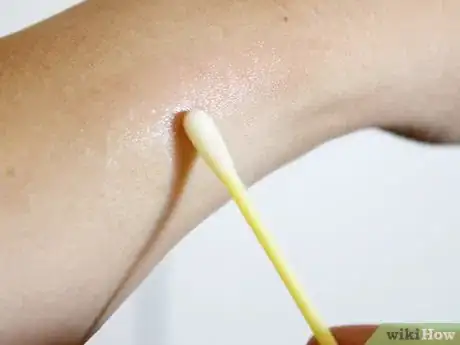
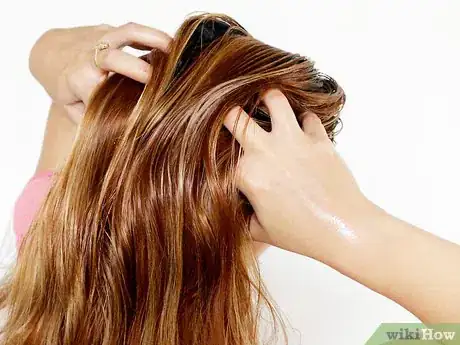

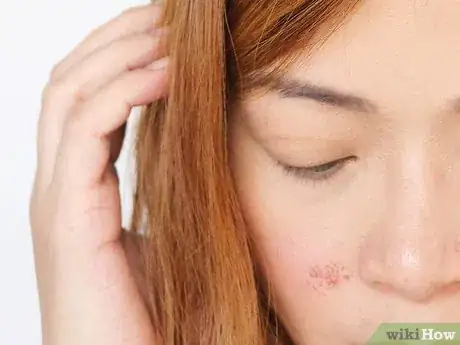
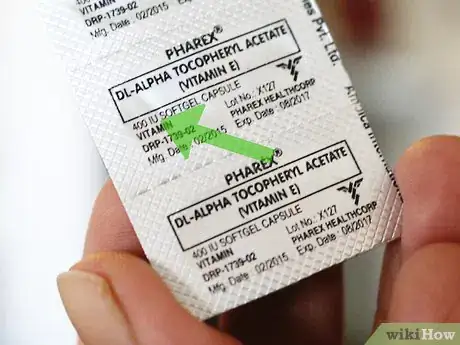
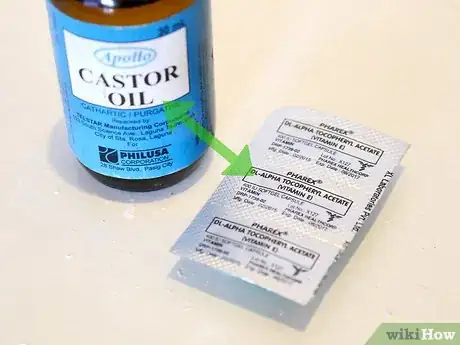


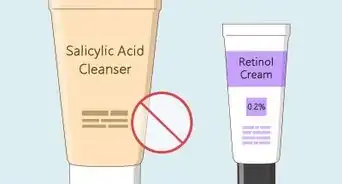



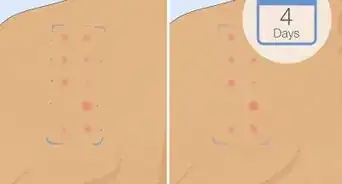

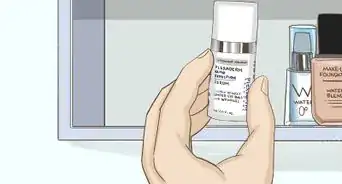
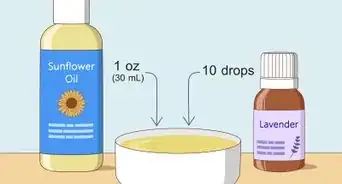











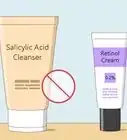






































Medical Disclaimer
The content of this article is not intended to be a substitute for professional medical advice, examination, diagnosis, or treatment. You should always contact your doctor or other qualified healthcare professional before starting, changing, or stopping any kind of health treatment.
Read More...